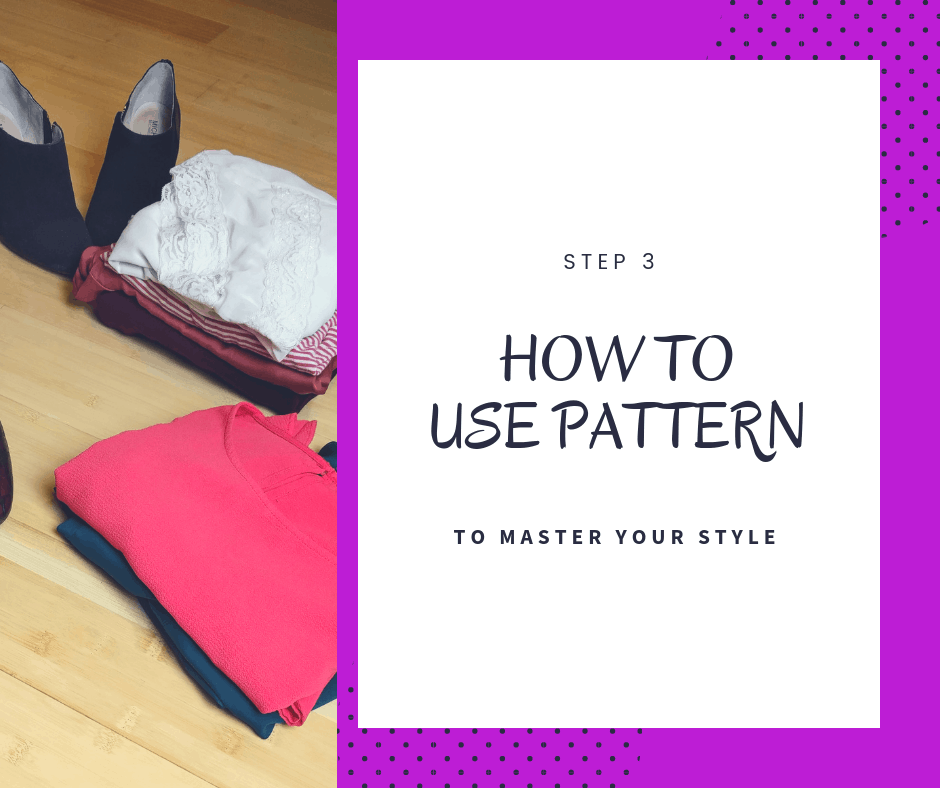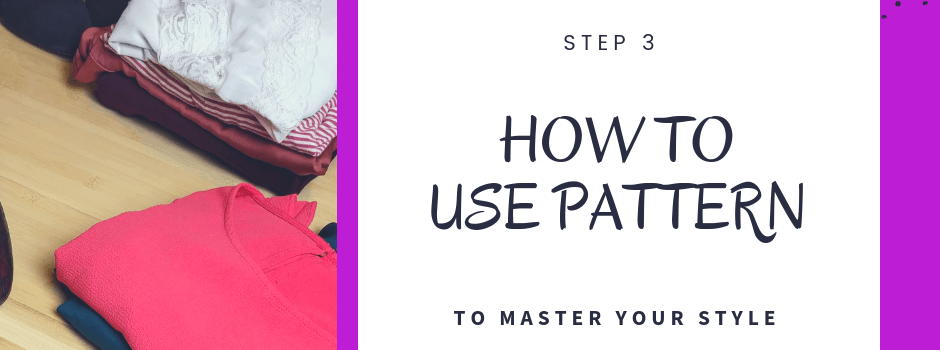
The third ingredient in our style recipe is pattern or print, not to be confused with a sewing pattern.
Patterns or prints can either be woven as part of the fabrication of the fabric itself using yarn that’s been dyed prior ot weaving or knitting or printed on the surface of the fabric AFTER they have been woven. There are also many different types of printing methods, but we won’t get into those here.
Patterns can be described in many ways. I found this very informative website with descriptions and pictures of various types of pattern that might come in useful when talking about specific pattern examples. https://artlandia.com/wonderland/glossary/.

Commonly asked questions about patterns?
In this post, I’m going to address the most commonly asked questions about prints:
- What are the most flattering pattern?
- Do large patterns make you look fatter?
- What are the best prints for plus size women?
- How do you wear prints?
- What are some slimming patterns and colors
- Is a chevron print flattering?
- Are Polka dots flattering?
We are mainly going to focus on the effect that a pattern can have on the overall look of a garment or an outfit. Does the pattern attract more attention than the other colors or patterns in the outfit? In a small pattern, the colors tend to blend together and read as one color by the eye and therefore attract less attention from their pattern alone. Larger prints demand more attention. Patterns can be hi-contrast, low-contrast or somewhere in-between. They can vary in their color composition from light, to dark and bright to subdued or a combination of several types or values of hues. Patterns can be organic in shape or geometric. The pattern can repeat in different ways– even, offset, Here are some questions that we’re going to consider when evaluating a pattern:
- What is the placement of the pattern on the body?
- How does the pattern effect eye movement?
- What is the contrast level of the pattern?
- Which colors is the pattern comprised of?
- Is the overall color effect of the pattern a good choice for me.
What are the most flattering pattern?
Like everything else in your style recipe, prints are a tool and need to be looked at critically. A specific print in one application may have an adverse effect for one person, but have a very pleasing effect for another person.
Patterns that have definite lines lead the eye in the direction of the line and elongate that direction; horizontal lines widen, vertical lines lengthen. Diagonal prints can make the body look longer and thinner because of the direction they leave the eye. Although stripes are an obvious example of prints with definite lines, there are other patterns that fall in this category as well. This list is not exclusive. It just gives a few examples for reference:
- Plaids
- Checks
- Argyle
- Chevron
- Herringbone
- Houndstooth
Smaller prints or prints with low contrast tend to be blended by the eye and have little or no effect at all. The bolder the color or the more contrast the print has, the more dominant it will exude over the other elements in your ensemble.
Be mindful of prints that have a radial or circular pattern. Watch for the placement of these motifs because they can create a bullseye effect if placed on a certain part of the body.
The print that is most flattering on you will be determined by what you are wanting the pattern to accomplish.
Add some variety of prints to your wardrobe with these items from Amazon: plaid shirt, checked blouse, argyle socks, herringbone vest, houndstooth coat
Do large patterns make you look fatter?
They can. If a print is disproportionately larger than your body or the area where the print is located, it can make you look larger.
What are the best patterns for plus size women?
Vertical stripes are great. Other great prints for plus size women are those that bring the eye to the center of the body. When it comes to most other types of prints, it’s the size that matters. Furthermore, prints that are too small get lost on the figure; too large of a print is overwhelming or can make the figure look larger. In conclusion, moderately small to moderately large prints work the best and can provide the most appeal.
How do you wear patterns?
Ultimately, prints are going to have dominance over solid colors of the same value or intensity. Use patterns in areas you want to look larger or draw attention to. Bold colors may outweigh your print in dominance if the print is subtle.
What are some slimming patterns and colors?
Patterns that lead the eye up and down or draw the eye to the vertical center of the body are slimming as well as deep colors. This doesn’t mean that you need to wear black. Unless you are a Winter, have a strong Winter blend or have black hair, black will wash you out and not look as flattering. There are so many other amazing options out there so don’t limit yourself.
Is a chevron print flattering?
You’ll probably get tired of me saying this, but it depends on how you wear it. If a chevron print is large and either one of the upward points or a downward point is directly in the vertical center of your body, it will draw the eye in and make you look slimmer. However, if the pattern is not as large, the chevron will act more like a stripe and draw the eye either up and down or from side to side depending on the direction. If you want your upper half to look bigger to balance out a larger bottom half and chevron print on the top will do the trick.
Notice the Chevron print of my top at the beginning of this post. The pale gray portion of the print sticks out the most because it is the only light color in the print. It’s placement makes that area look like the fullest part of my bust.
Snag both dresses on Amazon: Empire waist chevron dress, chevron print sheath dress
Are polka dots flattering?
I find your standard polka dot to be pretty neutral. It does add interest, but even a high contrast doesn’t innately carry a lot of dominance. Of course, the larger the dot, the more dominance. Unless the polka dots are very large the print won’t compete very much with the other elements in your outfit.
Be a master of patterns
In conclusion, I hope you’re feeling confident in your pattern and print skills now. There are no good or bad prints. It really just comes down to how you use them. If you still have questions about what works best for you, I’d love to hear from you. Leave me a comment below, it may help someone else too.
Once you have mastered pattern, read on about texture, color or proportion, then apply it to your body type. In the meantime, check out the pattern section of my Style Recipe pinterest board.










